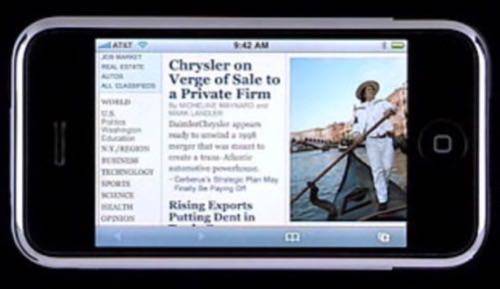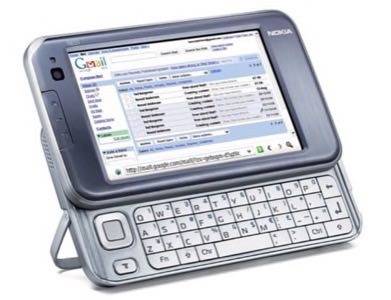There are, by some accounts, about 3 billion mobile phone users in the world. That’s more than the number of automobiles, more than the number of personal computers, more than the number of landline phones, more than the number of TVs, and more than the number of credit cards. The mobile Internet, however, has largely been a rather uninspiring experience. While many people, mostly in the developing world, use their mobile phone as their primary Internet or computing device, the mobile web is often looked at as a jungle of slow loading pages, poor design, and unoptimized content that is a pain to use on a tiny screen.

In the US there are 237 million wireless subscribers, but only 32 million accessed the Internet in September — a tiny fraction of the 210 million total Internet users. Compared to Japan, where just 100,000 less people accessed the mobile web than did people log on from a personal computer, it is clear that in the US using a mobile phone for web access is not yet a mainstream activity.

This year, a few potentially game changing devices have been released in the United States and elsewhere that could help push the mobile web (and the concept of accessing the web as a whole from your mobile) into the mainstream. The first, of course, is the iPhone (and iPod Touch). In August, Forrester Research talked about the iPhone as a mobile web killer, because of its large screen, fast wifi access, and ability to elegantly display the full Internet without having to bother with mobile optimized sites — which not every web site offers. We were skeptical, saying that iPhone has more going for it than the mobile web, but “isn’t quite a Mobile Web killer just yet.”
Even so, we’ve already sung the praises of the iPhone, listing its strong, full web access as one of our favorite features. Perhaps even more importantly for the adoption of mobile web usage, the iPhone also introduced affordable data plans for users. The cheapest iPhone plan (AT&T), which includes unlimited data, is $59.99/month in the US. Verizon Wireless, meanwhile, has plans (in my area) starting at $79.99 and data usage usually counts against your monthly minutes. Clearly, the iPhone lowers the barrier of entry for many users by making access cheaper.
But, even though the first three months of sales for the iPhone have been good — estimates range up to 1 million units sold since its late June launch — the iPhone still only accounts for a very tiny percentage of the mobile market.

Another important pair of devices launched this year were the Nokia N95 8GB and the Nokia N810, the latter being perhaps more compelling. The N810, like Apple’s iPod Touch, is not a phone, but rather a smartphone-sized Internet device. Running an OS based on Linux, and with support for Flash (something Apple’s devices can’t boast), the N810, which will be sold starting next month, is built to be a portable Internet device.
With a Mozilla based browser, Flash support, and a slide out keyboard, it can be looked at as a palm-sized computer (it’s a bit bigger than most phones) that can be used to access the platform that is the web via a wireless connection. Some early reviewers are skeptical, however, wondering who would pay $500 for a palm-sized Internet device that isn’t a cell phone.
Conclusion
It’s true that the N810 and the iPod Touch and similar devices may fail on the first go around, but they’re indicative of a trend toward mobile computing and acceptance of using mobile devices to access the web and the growing catalog of web applications to get things done. As wifi access becomes more ubiquitous and relying on cellular networks to get online via mobile devices becomes less important, I think we’ll see a lot of growth in this market. As applications move online and access is everywhere, full-sized computers will be needed less, and will be less desirable, for many of our daily tasks. The mobile phone (or mobile Internet device) as your primary computer may become a less foreign idea over the next few years in developed nations.
What do you think? Is the mobile web (or, rather, using mobile devices to access the web) finally coming of age? Are we set to see more of these devices flooding the marketplace in the future or will the idea never take off? At the end of last year, only 15% of R/WW prognosticated that the mobile web would be the biggest web trend of this year. Could the results for next year’s predictions be different?










